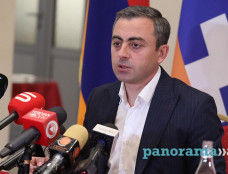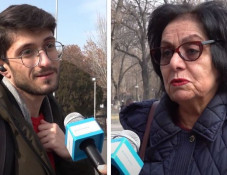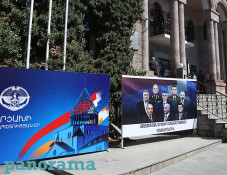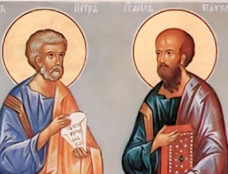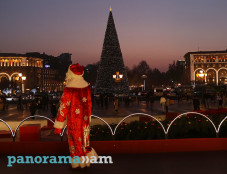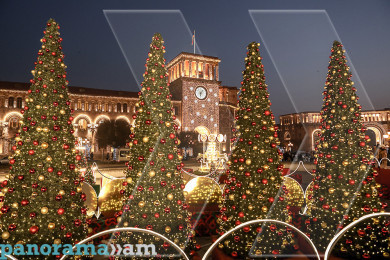Glendale's Museum of Neon Art honors Armenian Genocide victims in neon display
Throughout the month of April, the Museum of Neon Art in Glendale, California will display a new window-based public display in honor of Armenian History Month. The exhibit presents an excerpt of a poem in Armenian and English under neon lights representing the Armenian flag; it faces the paseo in front of the museum and will be best viewed when the sun sets. The exhibition was created by MONA and Leaf Cutter Studio, Asbarez reported.
The display features the tricolors of the Armenian flag – red, a symbol of sacrifice and will to survive; blue for the blue skies of the ancestral homeland under which Armenians dream to live peacefully; and orange, for the fields of the Armenian Highlands and the hardworking nature of the Armenian people. Accompanying the neon flag is a verse from Armenian poet Paruyr Sevak’s book of poems, Anlreli Zangakatun, in Armenian and English.
“Anlreli Zangakatun literally translates as the Bell tower that is incapable of being silenced. Bells and bell towers are a call to action or a warning of danger ahead, but they fall silent when the call to action is over, or the danger has passed. In this case, the bell tower represents the inability to stay silent because the call to action – the call for justice – has not yet been concluded,” said MONA Curator of Engagement and Education, Ani Mnatsakanyan.
Visitors will have the opportunity to pause for a moment of silence in honor of the 1.5 million Armenians massacred during the Armenian Genocide and the millions of others who were orphaned and displaced globally as a result of the state-sanctioned massacres. This April 24th will mark the 106th anniversary of the Armenian Genocide perpetrated by the Ottoman Empire. To this day, the government of Turkey denies their role in the genocide.
The chosen verse from the poem Chime of Revelation is a reminder of the silence of the American government in regards to the genocide, and each President’s empty promise to officially recognize the 1915 massacres as Genocide. The poem and display honor the Armenian-American community’s persistent dedication to genocide awareness in order to heal the open wounds of their ancestors, and seek justice. A genocide forgotten is a genocide repeated, and acknowledgement of the past helps other marginalized communities escape a similar fate.
Newsfeed
Videos






